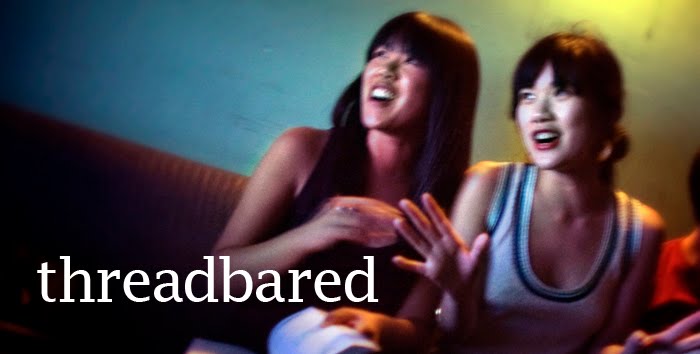 This post is supposed to be about the latest occurrences of blackface in fashion -- specifically, the 14-page editorial featuring Lara Stone, a white Dutch model, painted black and shot by Steven Klein for the October 2009 issue of French Vogue and also Carlos Diez's show at Madrid Fashion Week (September 22, 2009) in which models walked in blackface and, at times, with bared breasts.
This post is supposed to be about the latest occurrences of blackface in fashion -- specifically, the 14-page editorial featuring Lara Stone, a white Dutch model, painted black and shot by Steven Klein for the October 2009 issue of French Vogue and also Carlos Diez's show at Madrid Fashion Week (September 22, 2009) in which models walked in blackface and, at times, with bared breasts.There is indeed quite a lot to say about both events. To begin, fashion's seeming ineptness for dealing with race in ways that do not accommodate and/or supplement the already too long histories of racial objectification and commodification. We've discussed much of this history on Threadbared (see especially here, here, here, here, and here) already and will no doubt continue to, as there seems to be an inexhaustible amount of material. Second, these events (and others like it) are revealing of the ways in which multiculturalism and multiracialism --under the guise of postracialism, postmodernism, or just artistic edginess-- enables the continuation of white supremacy. For example, some are defending French Vogue for its provocativeness ("creative images . . . can sometimes [be] off-putting") and for its postracialism (arguing that it is "sort of beautiful in that having a person of one ethnic background look convincingly like she might be of another race shows the interconnectedness of us all"). But what is on display in French Vogue and on Diez's runway is not beautiful black bodies, but what Nirmal Puwar describes as "the universal empty point" that white female bodies are able to occupy precisely because their bodies are racially unmarked: "[Thus] they can play with the assigned particularity of ethnicized dress without suffering the 'violence of revulsion.'"
 The "violence of revulsion" that women of color generally, and black women particularly in the cases of this issue of French Vogue and Diez's show, experience is not mediated by these "edgy" acts of "postracialism". In fact, the violence of revulsion is redoubled here. Blackface highlights the privileged universal empty point that white bodies continue to occupy even in this so-called postracial moment, and in so doing, it positions racial difference against whiteness, as the other to whiteness. Moreover, blackface and other performances of racial commodification produce a different kind of "violence of revulsion" -- an everyday violence of revulsion like I experienced when I discovered Klein's editorial and Diez's fashion show.
The "violence of revulsion" that women of color generally, and black women particularly in the cases of this issue of French Vogue and Diez's show, experience is not mediated by these "edgy" acts of "postracialism". In fact, the violence of revulsion is redoubled here. Blackface highlights the privileged universal empty point that white bodies continue to occupy even in this so-called postracial moment, and in so doing, it positions racial difference against whiteness, as the other to whiteness. Moreover, blackface and other performances of racial commodification produce a different kind of "violence of revulsion" -- an everyday violence of revulsion like I experienced when I discovered Klein's editorial and Diez's fashion show.By this second order of "violence of revulsion," I mean the assault of racism and the assault of colonialism's traces on what was for me, until that moment of violence, a relatively mundane workday at home. Violently interrupting this scene of banality is not simply these images of racial arrogance, but my own visceral response of anger, exasperation, disappointment, and a feeling I can only describe as racism fatigue. Such images and their inevitable postmodern, postracial, freedom-of-artistic-expression discourses and apologists are not only tired, today they are tiring.



